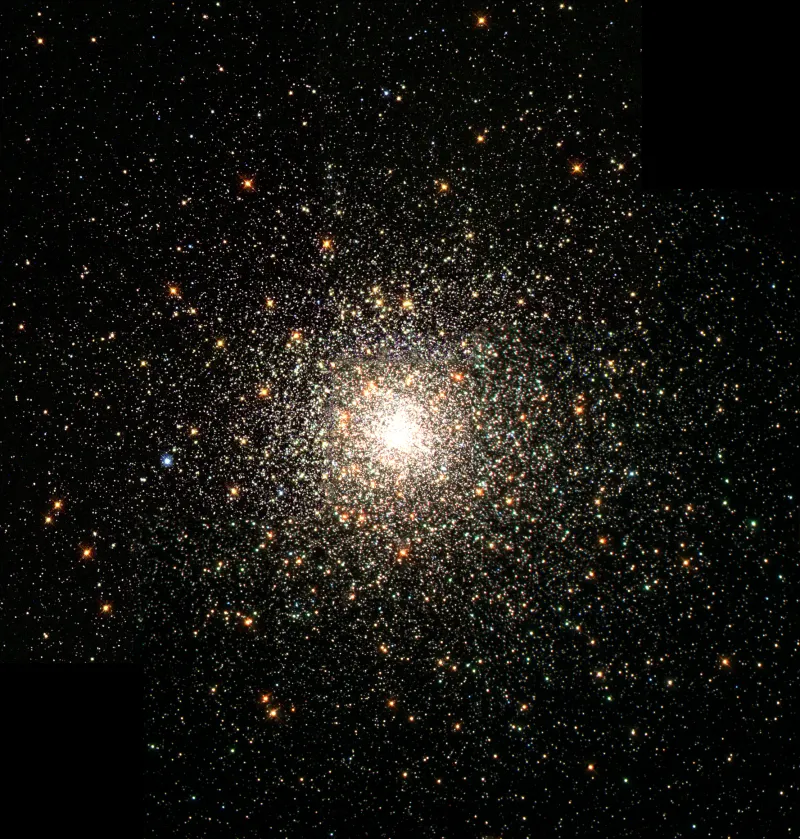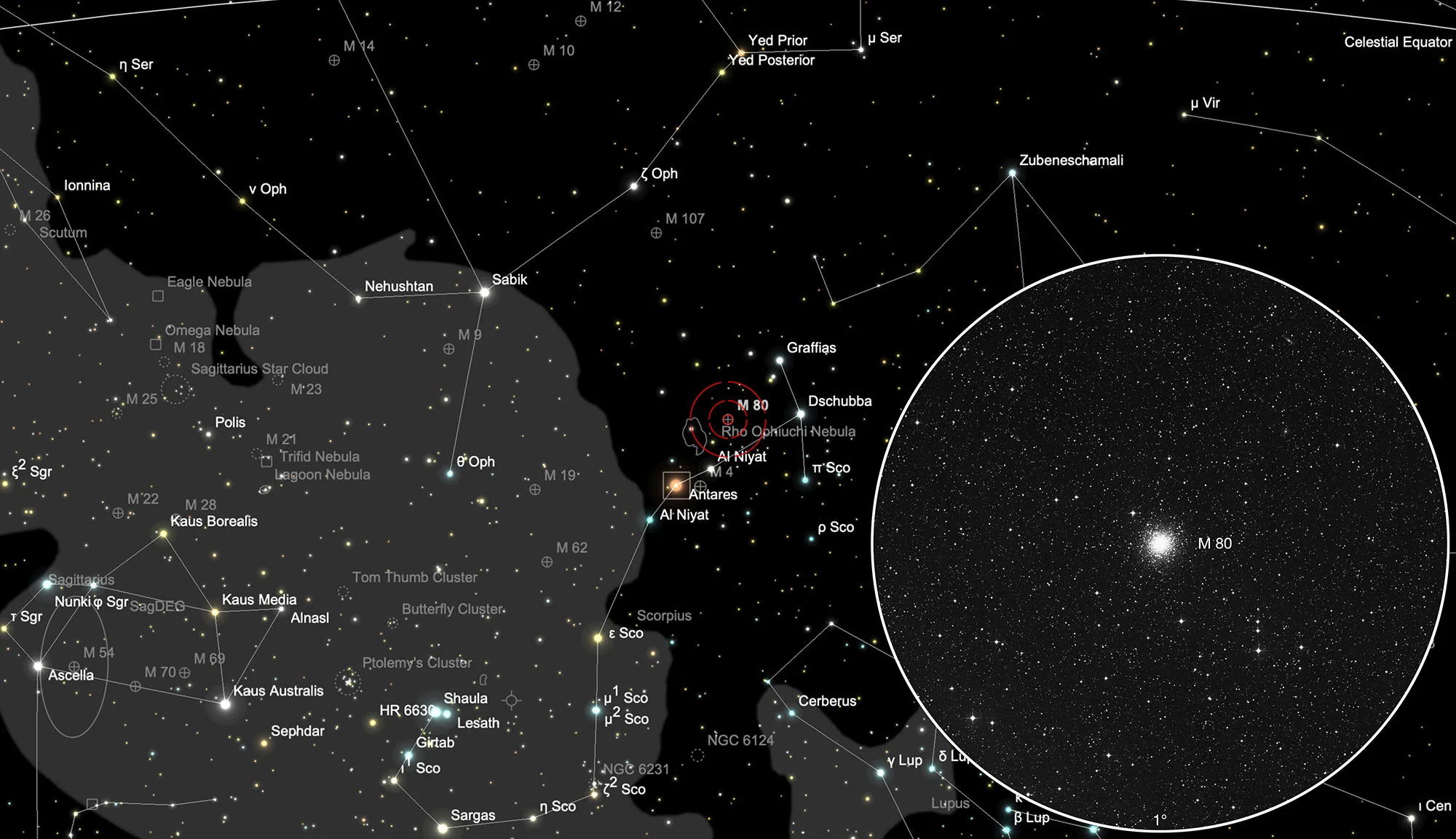Globular Cluster Messier 80

History
The globular cluster M 80 was discovered by Charles Messier on 4 January 1781. He wrote: «Nebula without a star, in Scorpio between the stars ρ and δ, compared to ρ for determining the position: The nebula is round, the centre brilliant, looks like the core of a comet wrapped in nebula. M. Méchain saw it on 28 January 1781.» [281]
Physical Properties
About 28'000 light years away is M 80, one of the densest of the 150 known globular clusters in our Milky Way. This globular cluster contains several hundred thousand stars, which are held together by their mutual attraction. In 1860 a nova occurred in this globular cluster. Novas can arise when a nearby companion star transfers fresh hydrogen to a burned-out white dwarf. This can lead to a thermonuclear explosion on the surface of the white dwarf and a brief increase in brightness. A large number of blue stragglers were also found in the cluster, stars that are unusually young for globular clusters. [215]
| Designation | NGC 6093 |
| Type | GCL (II) |
| Right Ascension (J2000.0) | 16h 17m 02.5s |
| Declination (J2000.0) | -22° 58' 28" |
| Diameter | 10 arcmin |
| Visual magnitude | 7.3 mag |
| Metric Distance | 10.000 kpc |
| Dreyer Description | !! globular, vB, L, vmbM (var *), rrr, st 14 |
| Identification, Remarks | h 3624; GC 4173; M 80; GCL 39; ESO 516-SC11 |
Finder Chart
M 80 is located in the constellation Scorpius between the stars ρ Ophiuchi and δ Scorpii. It can best be observed in the months of January to November.
